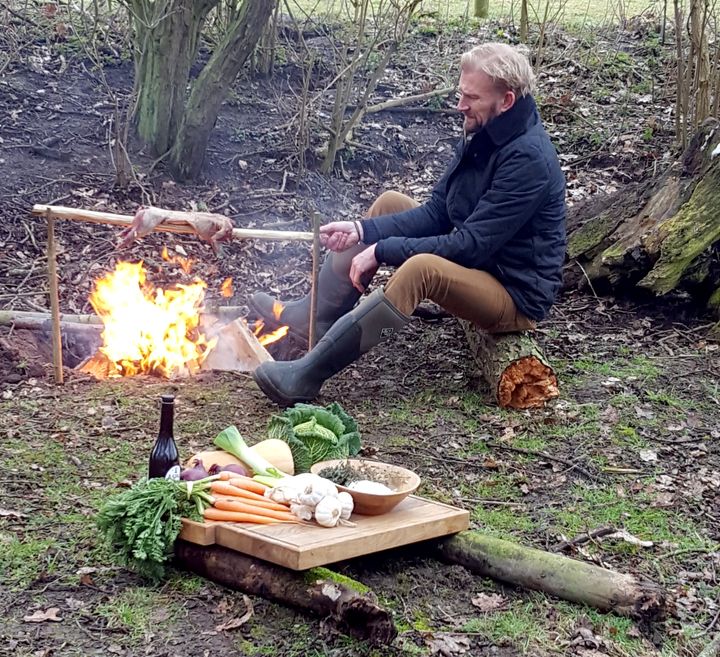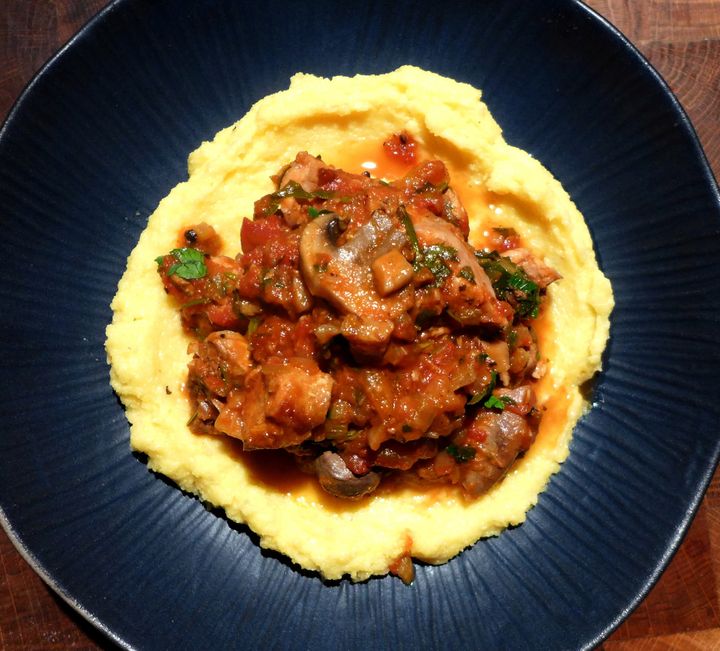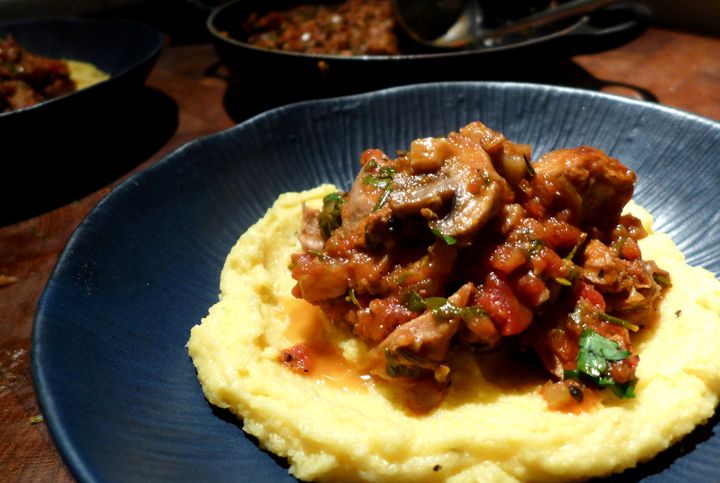
I’ve been contributing some work recently to an upcoming book, all about Suffolk chefs and their favourite producers. One of the chapters features Stephen David and his friend and fellow forager Jon Tyler. Stephen was cooking wild rabbit on an open fire (and under it, baked in a fire pit) and he had an oven-ready bunny going begging.
I never say no to a free meal. Inspired both by the day and by a conversation I had with Jon, I decided to cook it alla cacciatore, supposedly the way Italian hunters traditionally cooked up their game. Presumably they would have built a campfire, too. My outdoor skills being limited, I used my stove.
There are almost as many different versions of this as there are Italian cooks, so this is my interpretation. Jon had foraged a bagful of Jelly Ear fungus but they all went in Stephen’s stew, so I chucked a few chestnut mushrooms into mine. If you have them, black olives and sun dried tomatoes give it a bit extra umami oomph. And if you don’t have wild rabbit, use chicken thighs or farmed rabbit, and adjust the cooking times downwards.
I served this with polenta, with a good dollop of butter and Parmesan stirred in to placate my husband, who is lukewarm about the stuff. He doesn’t like pasta either (although he has many redeeming features) but it would also be good with tagliatelle.
Hunter’s Rabbit (serves 4)

Ingredients:
1 large rabbit, jointed
1 onion, peeled and chopped
2 sticks of celery, trimmed and sliced
2 cloves of garlic, peeled and finely chopped
6-8 chestnut mushrooms, sliced
Thick slice of guanciale or pancetta, or 2-3 rashers of streaky bacon, diced
Oil
1 tin of tomatoes, chopped
1 large glass of white wine
Salt and freshly ground black pepper
2 sprigs of rosemary
2 bay leaves, fresh or dried
2-3 sprigs of fresh thyme or 1/2 tsp dried
2-3 sprigs of fresh oregano, or 1/2 tsp dried
Method:
Heat a deep frying pan and fry the guanciale, pancetta or bacon until the fat runs and it's lightly browned. Scoop out and set aside.
Add oil to the pan if necessary and brown the rabbit portions on all sides. Set aside with the bacon.
Fry the onions and celery until soft and golden, then add the mushrooms and garlic and fry for a few minutes more. Pour in the white wine, let it bubble up for a couple of minutes, then stir in the tomatoes. Add the meat back to the pan, along with the herbs, and season with black pepper and a pinch of salt.

Put on a lid and cook at a gentle simmer (or in a low oven – about 140C/285F/Gas mark 1) for about an hour or until the rabbit is tender and the meat pulls away from the bones, turning the joints halfway through to make sure they are evenly cooked. You can add a little water if the stew is drying out, but you are looking for a thick, intense sauce. Check the seasoning before dishing up.
You can either serve the rabbits joints as they are, or allow the stew to cool and then remove the meat from the bones, cut into bite-sized pieces and re-heat in the sauce. Like most casseroles, this tastes even better next day.
